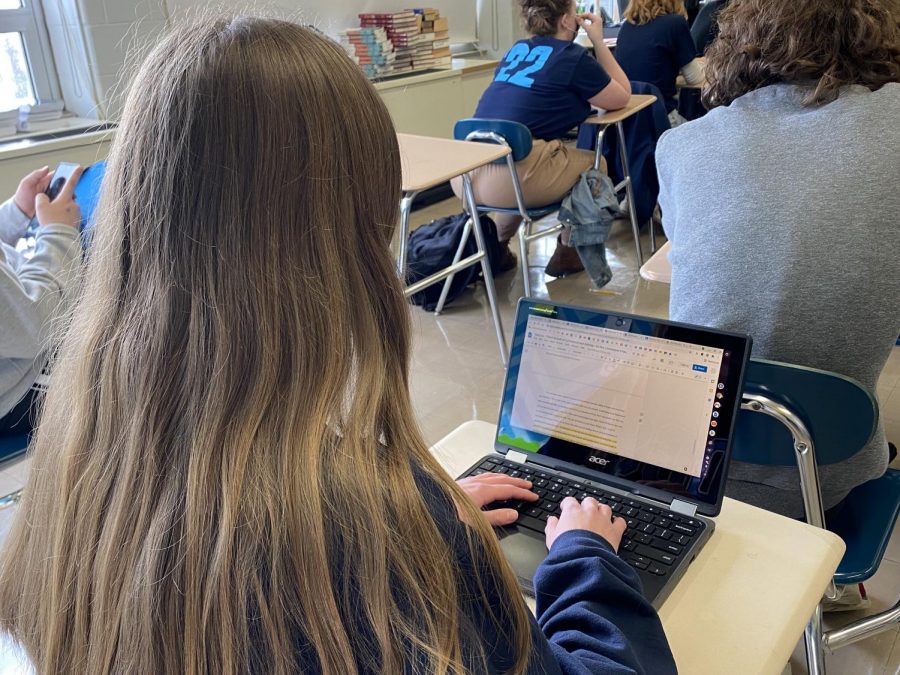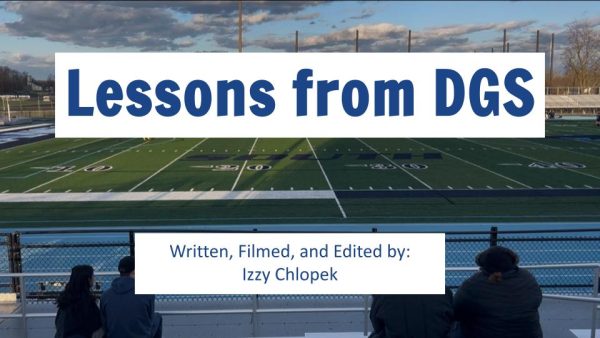The evolution of technology use in American education
Teachers have began to incorporating more technology into their lessons after adapting their teaching to virtual classes last year.
The American educational system has been working to expand technology within classrooms for the past decade. The pandemic exacerbated this effort, leaving teachers with decisions regarding how much technology to implement in their classrooms. Although in-person instruction is necessary for student well-being, the use of technology adapted during virtual learning can still be beneficial for learning in the future.
The National Education Technology Plan 2010, developed in November 2010 by the Obama administration, called for using advanced technologies in the education system to improve student learning. This initiative forever changed the trajectory of education in America. Eleven years and a pandemic later, the vision of the Obama administration is beyond what many believed to be possible at the time, as technology is now viewed as a necessity within the educational system.
Within the past eleven years, the education system in the United States has undergone massive reconstruction with the implementation of technology in the classroom. This was only furthered in March of 2020 after the United States was forced into a situation of mass technological reliance after COVID-19 closed all public schools in the United States for the remainder of the school year. The closure of schools forced both teachers, and students to adapt to a fully virtual classroom, relying on technology to communicate, develop digital curriculum and complete virtual assignments.
Schools around the country used resources such as Google Classroom and Zoom to complete school work. While these resources allowed students to continue learning despite school closures, the excessive use of technology necessary to hold school from home had negative effects on students. Senior Michael Joseph spoke about his experience learning virtually on zoom last year.
“Zoom was exhausting for everybody. Sitting in front of a screen [every day] for a lot of time is really difficult,” Joseph said.
“Zoom was exhausting for everybody. Sitting in front of a screen [everyday] for a lot of time is really difficult,” Joseph said.
DGS psychologist Catherine Robinson expanded on Joseph’s idea, sharing how virtual class affected students’ mental health.
“What we’ve learned from last year is that it [e-learning] increased isolation, putting students more at risk for depression and anxiety. It[excessive technology] impacts motivation, attention/concentration, attitudes, social interactions and causes fatigue.” Robinson said.
This wasn’t just true for DGS students. While school continued during the pandemic e-learning produced unwanted outcomes regarding student mental health. The American Psychological Association reported that around 81% of teenagers experienced high levels of stress during the pandemic. Robinson believes this is due to lack of interaction between students and teachers and not associated with increased technology use in the classroom.
Now that most schools around the country are completely back to full-time in-person learning, teachers have been faced with decisions about how much technology to use in their classrooms. Many teachers have adapted their teaching largely to an online classroom and now must decide how much of their virtual lesson plans they should incorporate into their in-person instruction.
DGS English teacher Lauren McSweeney shared how she has been integrating technology into her teaching this year.
“I would say I have incorporated technology a lot because I have found that my lesson plans are a lot more efficient now. I’ve definitely had to adapt them back in certain ways,… but I can see things like Pear Deck can still be really engaging… I would say that my lessons got better through COVID…” McSweeney said.
Additionally, McSweeney feels that technology is leading her to a more efficient classroom.
“Having access to so many resources has really helped my students. I think how quickly they can pull things up in the middle of class or share things with other students, it just feels like things work faster,” McSweeney said.
“Having access to so many resources has really helped my students. I think how quickly they can pull things up in the middle of class or share things with other students, it just feels like things work faster,” McSweeney said.
Sophomore Sophie Ring shares her observations regarding technology use in her classes this year
“I feel like we used computers a lot more after the pandemic. We do more google docs and stuff online…I think teachers are using technology a lot more because all of their lesson plans are from last year which was all online so we are still using online stuff,” Ring said.
In an already technologically advanced society it seems that the pandemic has added a level of sophistication to technology use in the classroom after forcing teachers to reinvent how they incorporate technology into their teaching. This seems to indicate that technology use in schools will only be furthered in the coming years now that administrators, teachers, and students have had the opportunity to experience the vast ways technology can be used in learning.






![In this documentary, you will learn how violins are made. All music is in the public domain:
Music Produced by Deutsche Grammophon, Medici TV, Heifetz Institute, and Queen Elisabeth competition
Paganini, Caprice No. 24 [Song recorded by Jasha Heifetz]. Heifetz Institute. (Original work published 1817)
Paganini, Caprice No. 24 [Song recorded by Jasha Heifetz]. Heifetz Institute. (Original work published 1817)
Bartok, Sonata No.1 for Solo Violin [Song recorded by Kevin Zhu]. Queen Elizabeth Competition. (Original work published 1944)
Paganini, Violin Concerto no. 1 [Song recorded by Philippe Hirshhorn]. Queen Elizabeth Competition. (Original work published 1819-1825)](https://southblueprint.com/wp-content/uploads/2025/05/Screenshot-2025-05-07-122429-600x334.png)